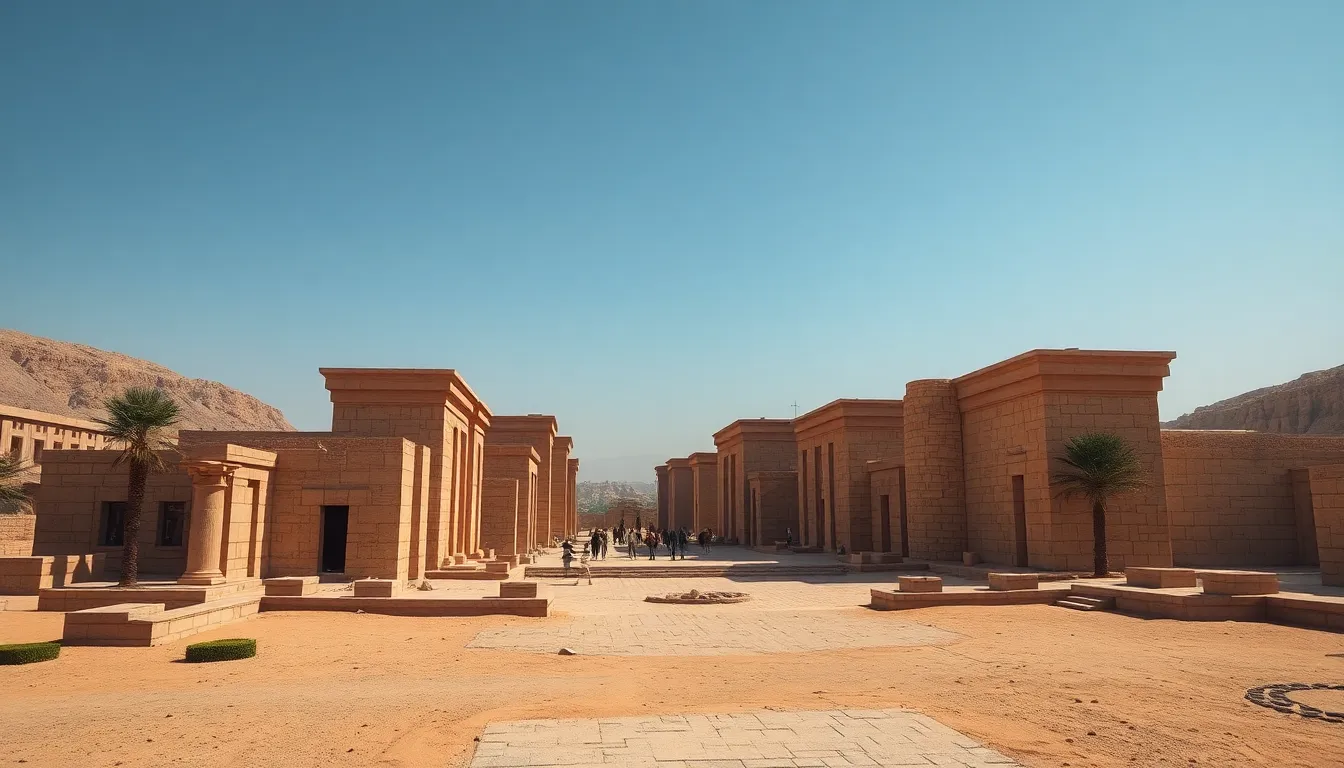The Mythical Geography of the City of Karnak
I. Introduction
Karnak, one of the most significant ancient cities in Egypt, serves as a vital testament to the grandeur of Egyptian civilization. Located near Luxor, Karnak is not just an archaeological site but a rich tapestry of history, culture, and mythology. The importance of mythology in understanding the geography of Karnak cannot be overstated; it provides insight into how the ancient Egyptians perceived their world and the divine forces that influenced their lives.
This article aims to explore the mythical geography of Karnak, examining its historical context, theological significance, layout, associated narratives, cultural influences, and archaeological discoveries. By delving into these aspects, we can gain a deeper understanding of how the ancient Egyptians integrated their beliefs and mythology with the physical landscape of Karnak.
II. Historical Context of Karnak
The establishment of Karnak dates back to the Middle Kingdom (circa 2055-1650 BCE), but its significance continued to grow throughout the New Kingdom (circa 1550-1070 BCE). Initially, it served as a religious center dedicated to Amun-Ra, the king of the gods, and over centuries, it evolved into a sprawling complex of temples, chapels, and pylons.
Key periods in Karnak’s development include:
- The Middle Kingdom: Early structures began to emerge.
- The New Kingdom: Major expansions under notable pharaohs like Hatshepsut, Ramses II, and Thutmose III.
- The Late Period: Continued use and reverence, although the political power had shifted.
Karnak’s relation to ancient Egyptian civilization is profound; it was not only a religious hub but also a symbol of the pharaoh’s power and the divine order of the universe.
III. Theological Significance of Karnak’s Geography
Karnak played a pivotal role in ancient Egyptian religion, representing a microcosm of the universe itself. The city was a focal point for worship and a center for the priesthood dedicated to Amun-Ra.
Major deities associated with Karnak include:
- Amun-Ra: The chief deity, representing the hidden power of the sun.
- Mut: The consort of Amun, depicted as a lioness.
- Khonsu: The god of the moon, often associated with time and healing.
The sacred landscapes of Karnak—such as the Sacred Lake and the various temples—are imbued with mythical implications, reflecting the belief in divine presence and interaction within the natural world.
IV. The Layout of Karnak: A Sacred Topography
The temple complex of Karnak is vast and intricately designed, covering over 100 hectares. It consists of several temples, each with its own significance and architectural style. Key structures within Karnak include:
- The Temple of Amun: The heart of the complex, featuring grand hypostyle halls.
- The Temple of Mut: Dedicated to the goddess Mut, showcasing stunning reliefs and inscriptions.
- The Temple of Khonsu: A smaller yet significant temple dedicated to Khonsu.
Architectural elements within Karnak are laden with symbolism. For instance, the towering obelisks represent the rays of the sun, connecting the earth with the heavens. Additionally, the alignment of many temples with celestial bodies emphasizes the ancient Egyptians’ deep understanding of astronomy and its relation to mythology.
V. Mythical Narratives Associated with Karnak
Karnak’s geography is intertwined with several creation myths and legends that highlight its significance in the ancient Egyptian worldview. One notable creation myth involves the emergence of Amun from the primordial waters of Nun, symbolizing the birth of the universe.
Legends of gods and goddesses connected to sacred sites at Karnak include:
- The divine birth of pharaohs, believed to be the offspring of Amun.
- The journey of the sun god Ra through the underworld, often linked to the temple’s layout.
Myths played an essential role in the daily lives of ancient Egyptians, informing their rituals, festivals, and moral frameworks. The narratives associated with Karnak reinforced the belief in divine protection and favor.
VI. The Influence of Karnak’s Geography on Ancient Egyptian Culture
The geographical and mythical significance of Karnak had a profound impact on various aspects of ancient Egyptian culture, including:
- Art: Artistic expressions in Karnak, such as intricate carvings and murals, depicted mythological themes and religious practices.
- Literature: Texts and inscriptions found within the temple complex contain hymns, prayers, and stories that celebrate the gods and their connection to the site.
- Rituals: Pilgrimages to Karnak were common, with worshippers seeking blessings and participating in festivals that celebrated the deities.
Karnak served as a significant pilgrimage site for ancient Egyptians, who believed that visiting the temple complex would bring them closer to the divine and ensure their place in the afterlife.
VII. Archaeological Discoveries and Interpretations
Archaeological discoveries in Karnak have revealed a wealth of information about its mythical geography. Key findings include:
- Reliefs and Inscriptions: Illustrating the myths and rituals associated with the deities.
- Statues and Offerings: Reflecting the practices of worship and the significance of the gods.
- Burial Sites: Offering insight into the relationship between the living and the divine.
These discoveries have reshaped our understanding of Karnak’s mythical geography, revealing how the ancient Egyptians integrated their beliefs into their physical environment. Ongoing research continues to uncover new aspects of this fascinating site, promising further insights into its role in ancient civilizations.
VIII. Conclusion
The mythical geography of Karnak is a vital component of understanding ancient Egyptian civilization. The city’s complex history, theological significance, sacred layout, and rich mythological narratives contribute to its enduring legacy. As we reflect on the interplay between myth and geography, it becomes clear that Karnak is not just a historical site but a living testament to the beliefs and practices of an ancient culture that continues to captivate the modern world.
In conclusion, the exploration of Karnak’s mythical geography offers invaluable insights into the ancient Egyptians’ understanding of their environment, their gods, and their place within the cosmos.




